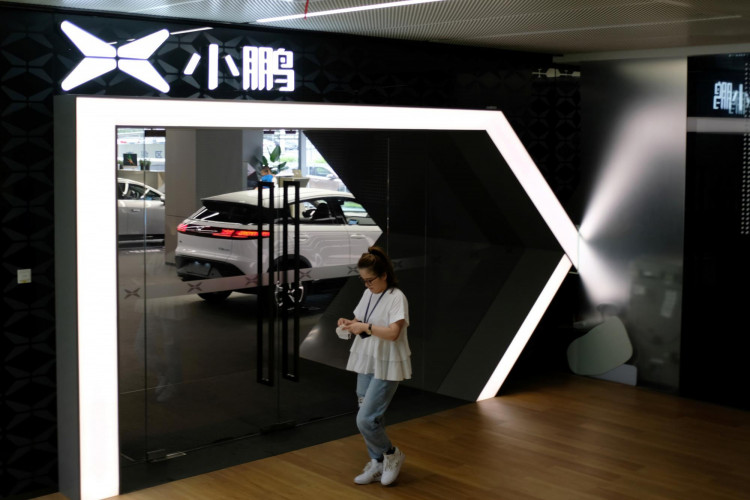Xpeng Motors, which recently landed a contract with Volkswagen thanks to its leading technological prowess, is set to lose a key figure in its research and development team.
On August 2, He Xiaopeng, chairman of Xpeng Motors, announced on social media that due to family and various other reasons, Wu Xinzhou, the deputy head of Xpeng's autonomous driving center, expressed his intention to return to the United States in the latter half of last year. Over the following 10 months, Xpeng established a new working model, proactively optimized and iterated on its structure and organization. Dr. Li Liyun, who was in charge of the XNGP project, will take over the autonomous driving team.
He Xiaopeng shared that Wu Xinzhou will become the highest-ranking Chinese executive at a globally renowned company, and will continue to deeply collaborate with Xpeng in areas such as chip technology.
A report by 36Kr suggests Wu is set to join global chip industry titan NVIDIA as a senior vice president, reporting directly to NVIDIA's co-founder and CEO, Jensen Huang.
This significant personnel change has sent shockwaves through the automotive industry. Wu was a core figure in Xpeng's intelligent driving business. Under his leadership, the team developed their own intelligent driving software algorithm, propelling Xpeng to become a leader in autonomous driving technology in China.
This news seems to have affected Xpeng's stock performance on the Hong Kong exchange, causing its price to tumble to 68.35 yuan per share, a drop of 17.35%.
Wu, an alumnus of Tsinghua University with a bachelor's degree in electrical engineering, also holds a master's and doctoral degree from the University of Illinois at Urbana-Champaign. Prior to joining Xpeng, he worked for over a decade at Qualcomm, leading its autonomous driving R&D team.
When Wu joined Xpeng Motors in March 2019, he took full charge of the autonomous driving business and team management. According to a later report, before Wu's arrival, the company had struggled with developing its own intelligent driving software. It wasn't until Wu joined, restructured the technical architecture and consolidated the team, that Xpeng's autonomous driving development got on the right track.
Under Wu's guidance, Xpeng was able to replace the supplier's solutions with its own algorithms in the P7 model launched in April 2020, ahead of both Li Auto by over a year and NIO by almost two years. In October last year, Xpeng's NGP (Navigation Guided Pilot) function was first equipped on the P5 model, making it the first mass-produced vehicle with city-based intelligent assisted driving in China.
In some measure, the technical achievements of Xpeng's smart technology can be attributed to Wu and the autonomous driving team he led. The newly launched Xpeng G6 is currently the most affordable vehicle on the market capable of advanced assisted driving, thanks to Xpeng's extreme optimization of hardware chip computing power and effective cost control.
In the past July, Xpeng Motors once again returned to monthly sales of 10,000 units, thanks to the hot-selling G6. Orders for the new G6 exceeded 40,000 within a month of its launch, with the high-spec "Max Edition" accounting for a whopping 70%.
According to insiders, Wu's departure is fairly certain. There's industry buzz that he might join NVIDIA in the next one or two months, a poorly kept secret in the sector.
Moreover, Liu Lanchu, the head of autonomous driving AI who represented Xpeng at the 2023 CVPR (Computer Vision and Pattern Recognition) conference, is reportedly also leaving, potentially to engage in robotics R&D work.
Meanwhile, Xpeng's intelligent driving team has experienced some minor turbulence since the beginning of the year, with several mid-level employees already having left to join autonomous driving companies such as Dazhuo Technology and Qingzhou Intelligent Travel. Xpeng's North American R&D team is also set to downsize as the company shifts its strategic focus to China.
During his four-year tenure at Xpeng, Wu established a stable autonomous driving team of around a thousand people. Xpeng's American team, comprised of about 150 people, is responsible for core technology research and development. Most of the teams related to market application are located in China, spread across Beijing, Shanghai, Shenzhen, and Guangzhou.
In a recent interview, Wu pointed out that Xpeng has already completed software platforming on the NVIDIA Orin platform, with the same software version supporting all models, achieving a stability level of around 75% to 80% in its software architecture. The goal is to basically complete the stabilization of the software architecture by the end of next year, with most future work focusing on iteration and proficiency in handling corner cases.
From this perspective, any impact on Xpeng's intelligent driving business due to personnel changes should be minimal in the short term. However, with rivals like Li Auto, NIO, and Huawei stepping up their game in the autonomous driving sector, Xpeng will face significant pressure moving forward.
Li Auto has already announced its plans to extend its advanced assisted driving feature to 100 cities nationwide. NIO, which primarily focuses on highway-assisted driving features, is concentrating resources to implement advanced city driving assistance in the second half of the year, even temporarily downgrading the priority of its low and mid-range sub-brand, Yingtuo.
Traditional car companies, including BYD, have also formed teams of 3,000 to 4,000 people to develop assisted driving software and hardware solutions. Han Bing, head of BYD's intelligent driving business, stated in a June event that "BEV is BYD's opportunity to overtake in the race for advanced intelligent driving."
He Xiaopeng said in his statement that he will continue to personally lead the autonomous driving and R&D teams, and plans to restructure Xpeng's intelligent team by integrating autonomous driving, cockpit, electronic and electrical architecture, as well as several innovative projects into a stronger team, while increasing its intelligent planning and operations team.






